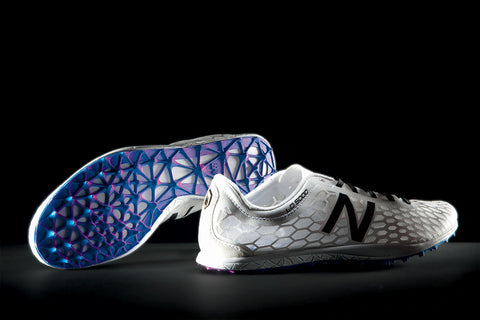New products are introduced periodically throughout the years. Usually, the products are upgraded versions of previous models, such as the Apple iPhone. Each new model has improvements like a better camera, a bigger screen, and a faster processor. The same goes for cars and other industries. Everything just expands and improves. However, an innovation will occasionally come around that is so decade-defining that it changes the possibilities of what we can create. One such innovation is 3D printing, and it’s expanding the way we create things.
What is 3D Printing?
3D printing, also known as additive manufacturing, is a process of making three-dimensional solid objects from a digital file. The creation of a 3D-printed object is achieved by using an additive process. In this process, the object is created by laying down successive layers of material until the object is completed. Think of it like building a cake, layer by layer, but instead of frosting, we’re using materials like plastic, metal, or resin.
The Rise of Additive Manufacturing
While traditional manufacturing often involves cutting away material (subtractive manufacturing), 3D printing builds objects layer by layer. This technique allows for greater precision and customization, opening the door to endless possibilities in design and manufacturing. With 3D printing, we can create complex structures that would be impossible or extremely costly to produce with traditional methods.
How 3D Printing Works
The process starts with a digital 3D model, which can be created using computer-aided design (CAD) software or scanned from an existing object. The software slices this model into thin layers, which the 3D printer then reads to create the final product. The printer deposits the material layer by layer, following the digital blueprint, until the object is fully formed.
Materials Used in 3D Printing
- Plastics: The most common material, used for everything from prototypes to finished products.
- Metals: Used in industries like aerospace and automotive for creating durable parts.
- Resins: Ideal for detailed objects with smooth surfaces.
- Ceramics: Used for making high-temperature-resistant parts.
- Biomaterials: Emerging in the field of medical implants and tissue engineering.
Applications of 3D Printing
Aerospace and Defense
In aerospace, 3D printing is used to create lightweight, durable components that reduce the weight of aircraft, leading to fuel savings. The defense sector uses 3D printing for rapid prototyping and producing complex parts that traditional manufacturing methods can’t achieve.
Automotive Industry
Car manufacturers are increasingly adopting 3D printing to produce parts on-demand, reducing the need for large inventories. Customization is also easier, allowing for the creation of unique components tailored to specific vehicle models.
Medical Field
One of the most revolutionary uses of 3D printing is in the medical field. From custom prosthetics to bioprinting tissues and organs, 3D printing is transforming healthcare. Surgeons can even practice on 3D-printed models before performing complex surgeries.
Fashion and Footwear
Fashion designers are experimenting with 3D printing to create intricate designs that would be impossible with traditional methods. The footwear industry is also jumping on board, with 3D-printed shoes that offer a perfect fit and unique designs.
Construction
Imagine printing a house. With large-scale 3D printers, this is becoming a reality. 3D printing in construction allows for faster, more sustainable building methods, with less waste and more complex designs.
3D Printing in the Shoe Industry
Revolutionizing Footwear Design
The shoe industry has embraced 3D printing, offering a new level of customization and innovation. Brands like Adidas and Nike are leading the way, using 3D printing to create shoes that are not only stylish but also perfectly tailored to the wearer’s foot. The ability to design intricate patterns and structures that traditional methods can’t replicate gives designers unparalleled creative freedom.
Benefits of 3D-Printed Shoes
- Customization: Shoes can be tailored to the exact specifications of the wearer, offering unmatched comfort and support.
- Sustainability: 3D printing reduces waste by using only the necessary material, making it an eco-friendly option.
- Speed: Prototyping and production times are drastically reduced, allowing for faster innovation.
- Unique Designs: Complex, intricate designs can be easily created, offering consumers one-of-a-kind footwear.
Challenges in 3D Printing Shoes
While the potential is immense, the shoe industry faces some challenges with 3D printing. The cost of materials and machinery is still relatively high, making it difficult for smaller brands to enter the market. Additionally, ensuring the durability and comfort of 3D-printed shoes remains a challenge, as traditional methods have been refined over decades.
Future of 3D Printing
Continuous Innovation
The future of 3D printing looks incredibly promising, with continuous innovations on the horizon. As technology advances, we can expect to see even more industries adopting 3D printing, leading to more efficient, sustainable, and customized products.
Mass Customization
One of the most exciting prospects is mass customization. Imagine being able to order a product tailored to your exact specifications, whether it’s a pair of shoes, a piece of furniture, or even a car. 3D printing makes this possible, allowing for the creation of products that perfectly meet individual needs.
New Materials
Researchers are constantly developing new materials that can be used in 3D printing, from flexible polymers to conductive inks. These materials will expand the capabilities of 3D printing, allowing for the creation of even more complex and functional objects.
Impact on Global Supply Chains
3D printing has the potential to revolutionize global supply chains by enabling localized production. Instead of manufacturing products in one location and shipping them around the world, companies can produce items on-demand, closer to the point of consumption. This could lead to significant cost savings and reduce the environmental impact of shipping.
Ethical and Legal Considerations
As 3D printing becomes more widespread, it raises ethical and legal questions. For example, the ability to print weapons or counterfeit goods presents significant challenges. Additionally, intellectual property rights will need to be redefined in a world where anyone can download and print a product design.
Conclusion
3D printing, or additive manufacturing, is more than just a trend—it’s a revolutionary technology that’s transforming industries and the way we think about manufacturing. From aerospace to fashion, and from medical devices to footwear, the applications of 3D printing are vast and varied. As we continue to explore the possibilities of this technology, we can expect to see even more innovations that will change the way we create and consume products.
5 FAQs About 3D Printing – Addictive Manufacturing
- What is the difference between 3D printing and traditional manufacturing? 3D printing, also known as additive manufacturing, builds objects layer by layer, while traditional manufacturing often involves subtracting material to create the final product.
- What materials can be used in 3D printing? A wide range of materials can be used, including plastics, metals, resins, ceramics, and even biomaterials.
- How is 3D printing used in the medical field? 3D printing is used to create custom prosthetics, bioprint tissues and organs, and even produce models for surgical planning.
- Can 3D printing be used for mass production? While 3D printing is more commonly used for prototyping and small-scale production, advancements in technology are making mass production increasingly feasible.
- What are the challenges of 3D printing in the shoe industry? The main challenges include the high cost of materials and machinery, as well as ensuring the durability and comfort of the final product.




